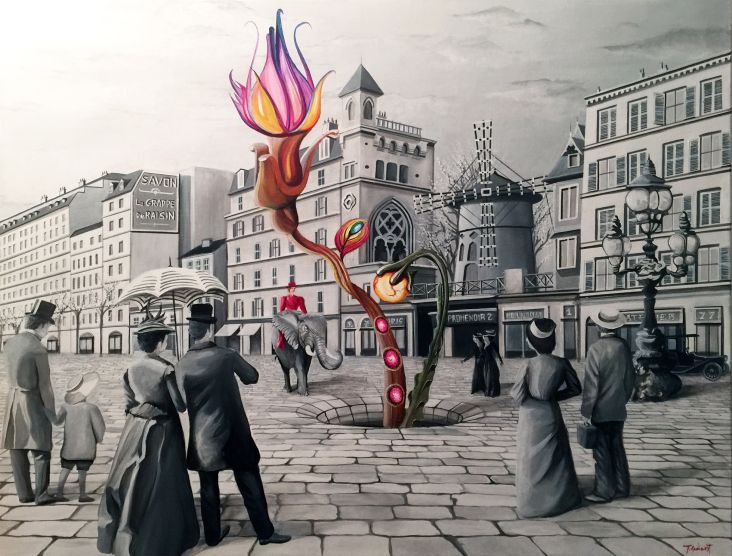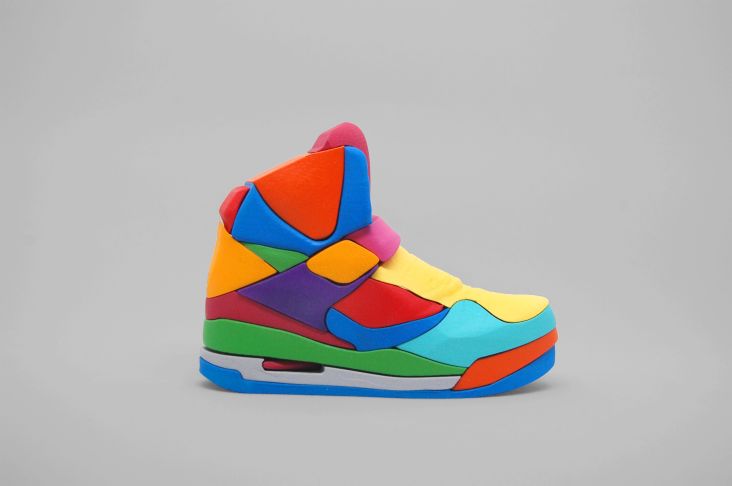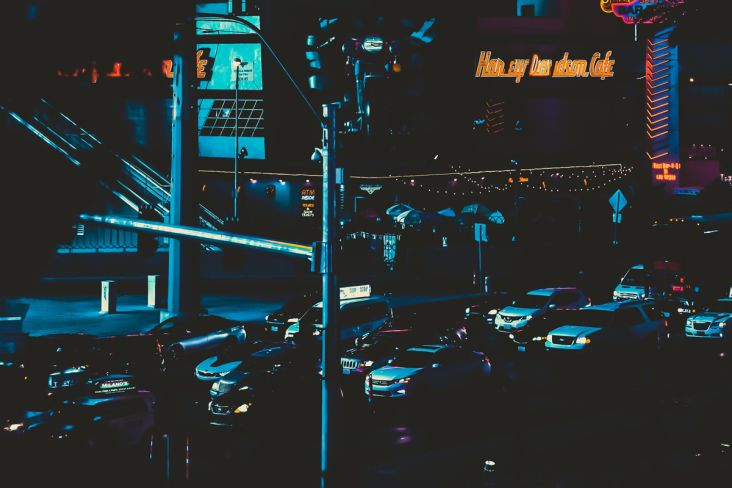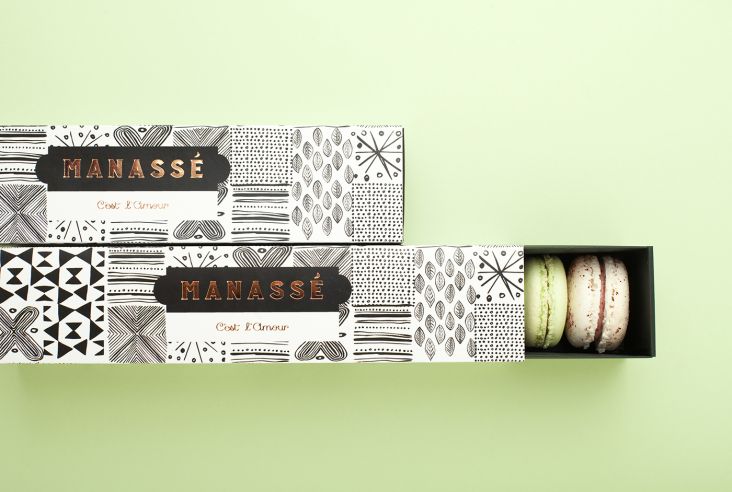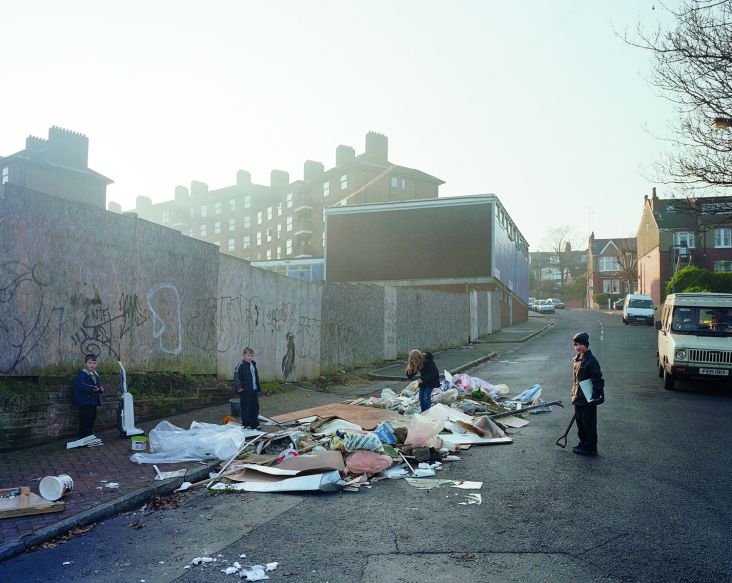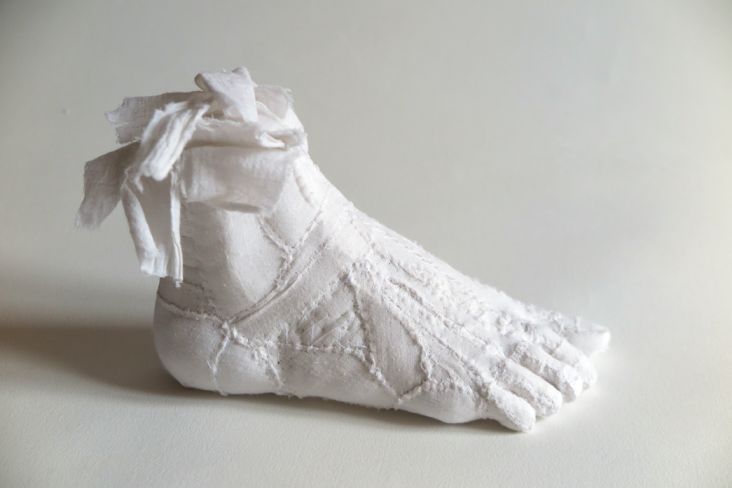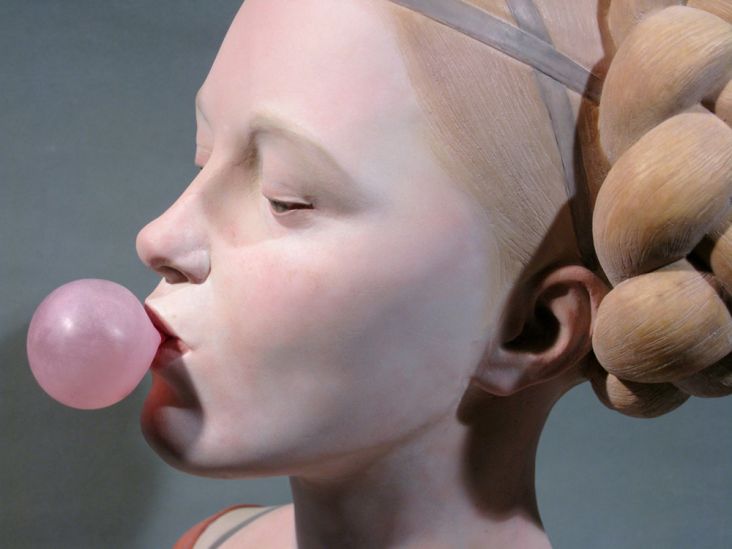Alicia Johnson on 20 years of brand transformations, staying small and keeping it real
Veteran brand strategist and creative director Alicia Johnson has been leading iconic brand turnarounds for over 20 years. She and her husband, media artist Hal Wolverton, have led creative on high-profile projects such as the award-winning rebrands of Comedy Central, Jaguar, SundanceTV, Lincoln and BBC America.
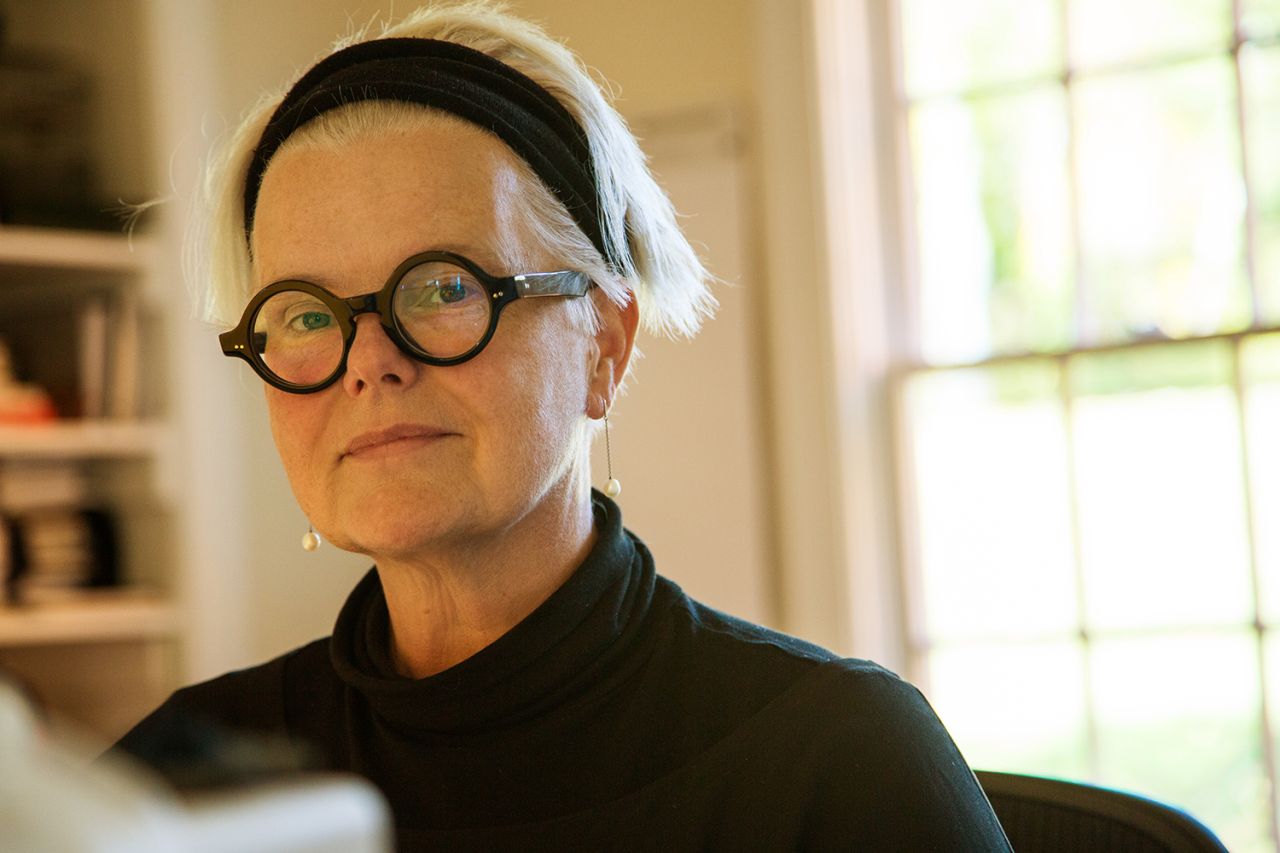
The couple operate their brand boutique, Johnson + Wolverton, from their farm studio in New York's Hudson Valley, balancing major automotive and broadcast media projects with their own personal projects. Currently, they're finishing production on a multimedia novel entitled Positano.
On her blog, AJ on Brand, Alicia recently took a break from writing about leading change at an organisational level to leading change on a personal level with a series on creating a personal 10-year plan. The same strategic mind that can bring a brand back from the brink of death, when applied to the art of life, moves mountains.
Her approach is light but no bullshit, ambitious yet totally approachable. Her voice is that of the sage older sister, the cool-as-shit mentor, the impossible-not-to-like boss who inspires the sort of envy that motivates real deal change. We chatted to Alicia about her career, her current projects and what she has planned next...
You’re behind some of the most influential brand rebirths of the last two decades. How does a boutique firm win work from brands as big as Jaguar and Comedy Central?
Our firm has been lucky to have a reputation for doing work that breaks through in one way or another, a lot of that comes down to the personal integrity of the members of the team. On Jaguar, Hal and I were invited to work on the agency pitch for the business, and then, when the account was won, we were invited to lead the work globally.
It was thrilling and quite eye-opening. We had never worked inside an agency and then suddenly we were deeply immersed. The Comedy Central pitch was similar – Hal and I had worked with the network before, and were invited to pitch. A creative on our new team, Kiffer Keegan, had worked at the network. In fact, that’s how we had met him many years before.
I believe the character and quality of the work you do makes an impression, and I know that people work with people. It takes both parts of that equation. I think that’s why the advice ‘do what you love’ is so persistent. If the work you do makes an impression that is resonant with the person you are, you’ll build a reputation for the kind of work you love to do.
Which has been your favourite rebrand?
The smart answer here is that a brand leader, like a mother, loves all her brands equally, but I do have a favourite. Jaguar shaped me the most. It was a massive challenge, and the people at Jaguar leading it were brave – fierce, even. The chief executive, Bibiana Boerio, was incredibly tough and I learned a fundamental character of success from her: have the courage to work the plan.
We all do so much work to figure out the best step forward, we map and design, and research, and strategies and meet, and refine and then, unfortunately, often organisational decisions are made under duress that are convenient rather than on-plan; politically savvy in the short term but derailing overall; or decisions require a leap that will resonate with the audience, but feel like you’re going too far for those who kind of prefer the brand the way it used to be.
Leading re-brands is a messy business full of fear, uncertainty, and doubt. It takes strength and a fierce commitment to a vision for the future. That’s an extraordinary lesson to have learned. I’m quite grateful for the opportunity and the teacher.
Describe the process you go through to transform an iconic brand that chooses to change
The process itself is quite organic, but the questions that drive us remain pretty consistent: why change? (do you have to, or do you want to), what about your business has, or is going to, change? Your sector, your product, your leadership, your consumer? We always investigate what is true about the nature of a brand, and how its behaviour could change to be more in line with that.
One of my favourite parts of the work is investigating what people want from the brand, where it has permission to lead and play. Often brands, just like people, have simply lost their way. They’ve been doing what they think is right, what the business is expected to do, and haven’t looked up to see what’s possible. We, humans, love to be surprised and delighted, and generally, we are quite judicious in who and what we’ll allow to take us on that ride. We look for ways that feel right for people to say 'ok, I’ll give it a go'.
"If the work you do makes an impression that is resonant with the person you are, you’ll build a reputation for the kind of work you love to do."
You’ve stayed small – why is that?
I’ve noticed a pattern over the years with organisations and their relationship to creative agencies. There will be a cycle of all work going out of house to agencies and other external creative resources, and then there will be a shift and everything is taken in-house. It feels like the tides to me, a constant ebbing and flowing.
The consistent nature is the need for creative people to engage in shaping a business and its relationship to its consumer. Our firm has a similar pattern. Often, to my own irritation, it doesn’t align with the tides of business, but, we have our own patterns. Working with very large teams, and working on our own.
Several years ago I noticed that our patterns are more like a film production company than a design firm or advertising agency. We are creatures of the project rather than creatures of the organisation, so we made a commitment to be exactly the right size for the project at hand.
Do you think the larger agency model is dead?
No. The businesses that large agencies serve have large-scale needs. The shape, or offers, of the larger agency model, is changing, and probably needs to change faster than it currently is, but is it dead? I really don’t think so.
There is a cautionary tale here for designers, though. Automated outsourcing could easily lead to a commoditisation of design. Design has been a difficult industry to make a great living in, and I sense that it’s getting more difficult.
My hope for young designers is that they value the uniqueness of their contribution in business, the value of their talents and skills. I hope they’ll invest the time to understand their role in the success of their clients. There’s a lot of humility that comes with that understanding, i.e. you’re generally not the centre of the universe, but there’s also a good tether to be found, a tether to being compensated for your contribution.
What’s changed the most over the last two decades?
Technology. What I have access to on my desktop right now to collaborate with a team would have required me going to a variety of professional suites 20 years ago. Ironically, that is perhaps one of the details that would lead you to believe that the big agency model is dead. But, I personally cannot create and produce everything that is required, no one person can.
What has changed is how I collaborate with a team. I have the capacity to engage with a project while it is being worked on, from anywhere. I can work with a designer or an editor, a composer or engineer, an animator or writer, photographer, cinematographer, etc. in their native environment or in a collaborative review environment without going to a specialised facility.
For the most part, we share the same tools, so the work is by nature more collaborative. By understanding the tools, I come to understand the language of the discreet disciplines. By understanding the language and the tools I understand the possibilities and limitations. In my experience that’s the ripest condition for surprising outcomes: crazy breakthroughs often just look like your best bet when you’re staring down the barrel of what can’t be done.
And how have you adapted?
For good or for ill, I’m that most dangerous of souls: I know a little bit about a lot of things. My core discipline is storytelling. The job I’m hired most often to do is strategy. My sense is that strategy (at least when I feel the most effortless and powerful) is a fantastic outline for a corker of a story.
So, I’ve adapted by understanding the aspects of story that are available to a brand, like a new logo or an audio mnemonic, or long form is written pieces or:30 broadcast TV spots, or podcasts or snapchat stories… some of these are enduring and some are ephemeral, and often it’s impossible to tell which is which.
What frustrates you about the industry?
Probably the most frustrating thing about the industry is my reaction to it. I get frustrated when I can see a path that I feel certain will work, and I can’t get people to move along it. Empathy would probably serve me well in that moment. But I get frustrated when people are turf-y. However, when I notice myself facing big changes in my own life I’m like a mother bear protecting what I believe needs to be protected.
I get frustrated that the path to an extraordinary vision is made fraught by our own selves. For instance, our brains reward us for figuring out problems, we get pleasure hormones like dopamine, and conversely, our brains warn us about potentially threatening things with stress hormones like adrenaline and then, just for good measure, it throws in a little sugar burst from our livers to support us to run or fight. Ideally, we would be more inclined to frame a future vision as a challenge to be figured out, and less like a threat. More pleasure than fear, but we are – our industry is – after all, human.
Is there anything that’s currently bugging you about your business? How will you tackle it?
I would call it more of an itch. I’m itching to do a big team project that is highly visual with very little literal narrative. Hal and I have been very focused on a personal project for the last several months that is, at heart, a novel. So many words! So, the lure of aesthetic storytelling is very appealing. That’s one of the reasons I love working with global brands. Well, at least global brands that behave in the way that I believe in! I believe great global brands tell human stories that don’t require translation. To tackle that itch, I’m going to have to go get that project.
Your studio is based on a farm in New York’s Hudson Valley. What’s it like to work from there?
Awesome. Perfect. Genius. Delightful. And very remote, we fall just shy of climbing the telephone pole to get to those internets. Many years ago, Hal and I moved from NYC to Portland, Oregon. One of the things we were looking for in that move was space to understand what we thought. Living in the city was wonderful, but you’re constantly under the influence of the work of others, what they think, see, feel, and want you to think, see or feel. Portland gave us that distance.
And then we dove back in with an office in Amsterdam and then we moved back to New York City and traveled for work for many years. So the balance feels right to be living in the middle of nowhere. There’s no lack of influence, my phone is uncomfortably close at all times, but I do relish this time to step away and experience the long rhythm of the seasons. My photo collection could be seen as repetitive, for instance, the four seasons on the back meadow. Over and over. But over the years I notice the nuanced changes in the scene and in the photographer.
Would you say your work/life balance is in order? Any tips you can share to achieve it?
Yes. But. Optimally I see work and life as one thing. To give shape to this I’m going to bring Einstein in. He said that he never figured out anything important sitting at his desk. He would go for a walk or work in his garden when he was stuck. So, would it be true to say that, for Einstein, gardening was work and therefore he just worked all the time? I don’t think so. I think he had a sense that stepping away was part of the whole. He never said anything about how long it took to garden his way into an answer.
Part of the reason working here is so delightful to me is that my studio is connected to the garden and the kitchen and the woods. It is not at all unusual to see a pile of chopped vegetables in the kitchen waiting for me to come back. I figure things out while chopping. When I’m on a particularly difficult challenge I make far too much soup. Also, I know for sure that I talk to myself while gardening (don’t tell my dog, though, he thinks I’m talking to him).
I also know for sure that a challenge that seems impossible or sickening or so angering that if I made a phone call instead of going for a walk, well, no good would come of it. A walk in the woods, sometimes a really long walk, has a way of uncovering interesting things under the fear or frustration.
I love to cook, I love to garden, I love to go with Buckley (the dog) on long walks where we follow whatever it is that he’s sniffing out. I have a pact with myself on those walks: I can use my phone for pictures but I can’t 'check-in'. All of those things make my life feel really full and balanced. It’s also true that they make me better at my job. Win-win.
That’s all very easy when we’re working from the farm. It’s not at all easy when we’re working internal or on location on a project. When we’re in that phase, it’s a different set of tools. To me, balance is a rhythm. When working internal or on location the rhythm is different. Longer durations of all on requiring longer durations of all off. That balance requires being more comfortable with black and white.
Either way, my tip is simple: step away. The only caveat is step away with yourself. Not a diversionary chat, not a digital check-in. Just step away, give your mind a little room.
How do you make the business work when you’re husband and wife too?
We met working on a project, so working together is our native state. And, prior to meeting, each of us had come to the conclusion that the partner in our life would need to be someone that we could make things with. The motivations for each of us was different, but the spirit was the same: I want to spend my life with someone that I can make things with.
Counterintuitive, but, I think being married and working together can make it easier to have a work/life balance. We’re experiencing similar deadlines at similar times, so, for instance, if one of us needed to cancel a planned vacation, both of us probably need to cancel. So there’s disappointment, but not conflict. We understand the ins and outs of what’s going on in each others' work lives without having to use dinner to download about it. When one of us does something fantastic, the other benefits.
It’s not all rosy, of course. On deadline, both of us are stressed. When we get bad feedback, we both feel it. If one of us is unhappy with a client fit, we both have to move on. We’ve agreed to some rules along the way. For example, at any given point on a project, if one of us is ‘more’ on deadline than the other, that’s just the nature of either of our contributions. So, the one that is less under pressure takes the lead on life’s niceties.
You’re finishing a multimedia novel entitled Positano. Tell us more…
It’s the second novel featuring the protagonist Stan Gardner. The first was Rothenburg: The Shame Bath. That story was written as a novel but came to life as a gallery sound sculpture that Hal and I collaborated on.
Stan is back, this time she’s on the rocks in Positano. She has put her life on pause to figure things out, but the pause button sets more in motion than it stills. I wrote the story first as a screenplay, but once I finished I had the overwhelming sense that I wouldn’t do the work to get it made, and I didn’t want to have a screenplay sitting on my desk nagging at me. So I rewrote it as a novel, imagining that I could at least self-publish.
Then, Hal suggested that we collaborate on it, that we make it as a digital story so that we could make art for it. So I rewrote again, and we started making art, photography, animation, film… and music plays a central role. Stan is a sound designer and her husband, Oliver, is a composer, so music is integral to their lives and how their imaginations work. In the story there are a variety of musical compositions that weave through, one in particular is a memory that haunts Stan.
One of the most liberating decisions we made was to 'use what we have'. We have our own talents, we had the location, and we had me. If I would be on camera as Stan, we could shoot on location and a big hurdle of we-can’t-get-there-from-here was removed.
It’s quite a naked project. I’m working outside my comfort zone in so many ways, and I know Hal is too. It’s exhilarating to be the final decision maker, there’s a moment from one of the shoots that I’ll hold dear for the rest of my life. We were shooting the scene with actors. It takes place on a yacht off the coast of Positano. We were there with a pretty big crew, it was time to start, and Hal and I looked at each other as we have a million times on shoots. He gave me the questioning look. I am the person that works with clients, and on a shoot I know that we’re good to go when I got the client ok. We were just looking at each other, 'are we good to go?' and we smiled. Yeah. We’re good to go.
I think it’s extraordinary to put that kind of responsibility on your own shoulders. In our industry we get used to having clients make final calls, and with that there’s a creative 'out'. If the work isn’t what you imagined, if it’s not as good as you want it to be, there’s someone outside yourself to hold responsible. That’s what I mean by this project feeling quite naked. It is what it is. We made it.
My hope for young designers is that they value the uniqueness of their contribution in business, the value of their talents and skills. I hope they’ll invest the time to understand their role in the success of their clients.
Any other exciting projects you’re currently working on?
We’re developing the 2017 season for Indycar and we’re pretty psyched. It’s the fourth year of the campaign so it’s quite a challenge to move the brand along and create an exciting season campaign.
There’s also that project itch I’d like to scratch, my instinct says automotive project. And we’ve started on the story after Positano. It’s set here on the farm (the farm’s name has been changed to protect its innocence).
On your blog, AJ on Brand, you’ve moved away from writing about leading change at work to leading change on a more personal level – what sparked this?
When we finished the BBC America project earlier this year it was time to step away. We took the summer off to work on our own project. I thought of it like rotating the crops in our life and it occurred to me that it might be interesting to readers to understand how I have gone about mapping change in our personal life.
I’ve done the work with friends over the years, volunteering to do the note taking and question asking while they imagine how their lives might change. It’s often a scary proposition (adrenaline and sugar vs dopamine!), but I’ve made a little peace with the process.
It sounds daunting, a 10-year plan, but really it’s just that 10 years is absurd enough to be able to let go. One year, three years, it’s all too finite and 'should'. Ten years is longer than you can figure out, so you can let go – and it’s long enough that your brain will let you play with the challenges rather than defend itself against the threats. I have come to cherish this work, rolling about in absurd dreams, imagining details that might bring them into tangible focus. Wonderful.
So how does someone go about making change for the better? Any key pointers you can share?
I’m pretty passionate about this. I believe that change is a creative practice. By practice I mean something that calls on your inner resources, like meditation or distance running. Creation calls on your inner resources… artists understand this, yet, ironically, most creatives that I know believe that creating change in their own lives requires them to set their creativity aside to do the grown-up work of something else like marketing, or production, or taxes.
Change for the better calls on your creativity first. Meaning it starts with a creative’s core strength. Imagination is the single most powerful tool you have in creating change. The practice part is coupling your imagination with spirited problem solving on the puzzles your imagination creates. I have loads of experience that shows me this combination brings tremendous joy – and the accomplishment of some crazy-ass dreams.
What’s next for you?
Well, one of the things that I love most about the projects that feature Stan Gardner, the protagonist in Positano, is that she’s a sound person. My physical voice is part of her projects. If I had that magic bottle with three wishes, one of mine would definitely be that I was a singer. Wait. Make that a singer/bass player.
In service of developing my own voice, I’m creating a podcast of the Change series and will be talking with a variety of people about how they practice change, personally and professionally (and if anyone knows a good singing coach, I’m looking for one).




 by Tüpokompanii](https://www.creativeboom.com/upload/articles/58/58684538770fb5b428dc1882f7a732f153500153_732.jpg)


 using <a href="https://www.ohnotype.co/fonts/obviously" target="_blank">Obviously</a> by Oh No Type Co., Art Director, Brand & Creative—Spotify](https://www.creativeboom.com/upload/articles/6e/6ed31eddc26fa563f213fc76d6993dab9231ffe4_732.jpg)








